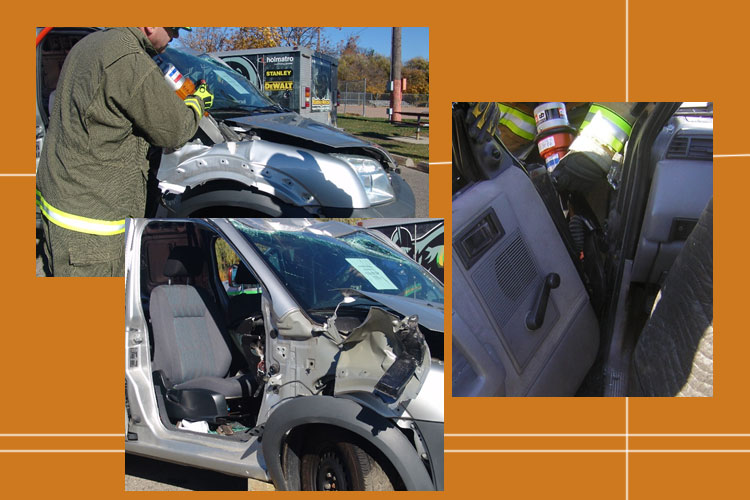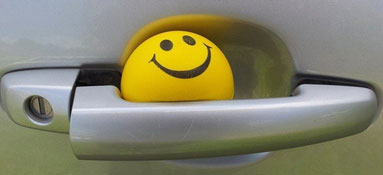

By Dave Dalrymple
As rescuers, we must have rapid access to remove the door in front of our patients. As time has progressed, door displacement operations have gone the route of cutting door hinges, which makes things better for the patient and tool operator. Another trend these days is the need to move the dashboard and the footwell wing more. These evolutions–door removal and dash movement–are commonplace, shouldn’t we set up to perform these from the beginning?
So why fender unlock? Many will say, “Dave, this is simply skinning a fender.” Yes and no. Yes, for practical purposes, if the door opens up after you remove the fender section. No, because the mindset is different. Look beyond the simple mechanical end of this operation and you will find that the mindset is aiming at a better patient outcome.
Let’s shift our operational tool focus to open up the fender first. If the fender is gone from the side of the vehicle that the patient is on, it allows us some more options. First off, it exposes the front door hinges to facilitate cutting them with our power hydraulic cutter. This door removal technique is by far the least intrusive to the patient, the safest for all concerned, and the fastest, period.
Think about what happens when we cut those door hinges: since the door latch is still engaged, the door drops to the ground at an angle. But this is okay since it is already really becoming unlatched! How? The angle of the door will cause the striker to rotate out of the latch. The door will simply come off if we try the door handle both inside or outside (or both at the same time–or better yet, try the trick of wedging the Mr. Happy stress ball into the outside door handle.) This provides a pathway to access the patient.

The faster we gain access to our patients, the better the chances for a positive outcome. Faster access also means faster understanding of our patient’s care needs, disentanglement-wise and management-wise.
In addition to the benefit of immediate access, what else do we get? We can more easily see whether we need to create some more dash/footwell space. By obtaining better access earlier, we can better come up with a suitable tactical action plan. The patient always drives what our action plan does on scene, and accurate information is key.
If we need to move the dash or the footwell or both, we are in a great position to go to work. Why go to this fender displacement (or “unlock”) as your first operation after stabilization and glass removal, basically vehicle prep for tool evolutions? With the advent of stronger high-strength alloys and composite materials and reinforcements, it has become more difficult to perform these tactics, thus cutting into the patient’s Golden Hour and shredding their Platinum 10 when it comes to survival. This tool operation is done with the mindset of saving time, putting us back into both the Golden Hour and Platinum 10. It also allows us to be proactive by making rapid access to our patient from the outside and allow visual inspection of the patient’s legs, pelvis, and feet early in the rescue, enabling us to plan accordingly. This also allows us the ability to decide how we will attack the dash and footwell. Will a dash lift work? Perhaps just horizontally push the footwell, or simply cut the footwell, grab the flap, and pull it outward.
Revisit your existing tool evolutions, looking for possible new ways to accomplish that same evolution. We need to keep on experimenting with new methods for displacing or removing vehicle components. The advent of power hydraulic rams, especially the telescoping type that can fit into tighter spaces and expand out further, opens up yet another new pathway. Regardless of the tool evolution, remember to always protect your patient and interior rescuer—use a shatter-resistant shield between them and the tool work going on, and soft protection whenever breaking glass to protect them from flying debris.
DAVID DALRYMPLE, AIETecRI, is a firefighter/EMT/rescue technician for Clinton (NJ) EMS/Rescue. He has been actively involved with emergency services for 34 years, having taught transportation rescue topics for over 22 years. He is the executive educator for RoadwayRescue LLC, a dynamic educational team for transportation rescue training. He has taught at FDIC since 2003, and was team captain when Clinton’s team won the world vehicle rescue challenge in 1998. He is certified as an International level extrication assessor and has taught and assessed in North America, Europe, the UK, and South Africa. In 2007, he received the coveted Harvey Grant award for excellence in rescue education. Dave is also a member of the Society of Automotive Engineers (SAE) task force on hybrids and electric vehicles for first and second responders. He volunteers as a fire/rescue technician for the Sports Car Club of America-Northern New Jersey region and is actively involved in emergency response at performance rally events with American Rally Association. He is a member of the International Council on Motorsport Science and his ESRS rally rescue program holds SFI accreditation. Besides writing for fire rescue publications, he is a contributing author for the PennWell Firefighter I & II textbook and is featured in a three-DVD educational series on vehicle rescue from PennWell/Fire Engineering. He is also the host of three seasons of extrication Training Minutes videos.
MORE
All the World’s a Stage: Rally Event Response, Part 1
All the World’s a Stage: Rally Event Response, Part 2
Training Minutes Throwback: Stabilization for Vehicle Extrication and Rescue

